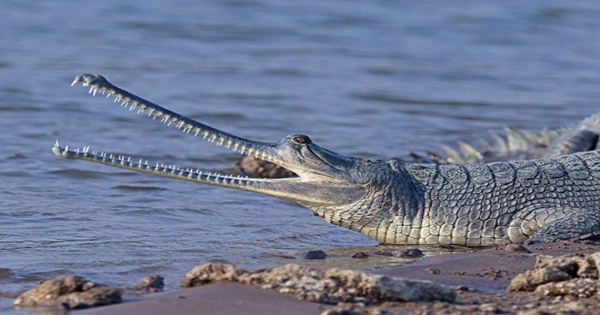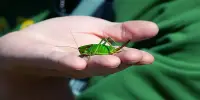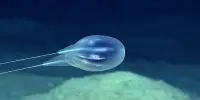The main character in the film Crocodile Dundee exposes a large scar on his leg that he refers to as a “love bite” from when a crocodile tried to devour him. Crocodiles and their cousins have been offering love bites for at least a hundred million years, according to toothmarks on a pterosaur legbone. The bone was presented in the journal Alcheringa, and it was compared to a pterosaur femur discovered 355 kilometers (220 miles) distant but dating from roughly 10 million years older. Despite the passage of time, the two bones were very identical — at least until one of them was eaten by a freshwater crocodylomorph.
Adele Pentland, a student at Swinburne University, told IFLScience that it’s hard to establish whether the crocodile bite happened when the pterosaur was still alive or whether it’s postmortem scavenging. However, knowledgeable paleontologists convinced Pentland that the pterosaur, like Dundee, would not have fled and found its way to safety. “Once a crocodile had you, it was the end,” she explained.
It appears that bites to the leg were a common occurrence among Australian pterosaurs. Some of Pentland’s co-authors were part of a study of the continent’s scarce supply of flying reptile specimens twelve years ago, and one of them had a sequence of scars on it that appeared to be formed by the teeth of an unnamed marine predator.
Not only is the notion that everything in Australia is attempting to kill you true, but it has also been true for a long time. The threat came from the water for creatures that were so powerful in the air. Pentland couldn’t match either specimen to a species since he only had a single bone to rely on. Pentland previously proved that both of these specimens belonged to the Anhangueria, a fairly broad clade that she and her co-authors concluded both belonged to.
“It’s incredibly tough to determine wingspan from only legbones,” Pentland explained, “but based on comparison, we’d assume these had spans of 4 meters.” It’s incredible that such critters might take to the air after capturing fish, but previous study has shown that it’s technically conceivable. It would have been a very other story if you were carrying a crocodile on your leg.
A pair of isolated legbones is a very restricted resource to analyze, but pterosaur paleontologists must become accustomed to getting a lot out of a little. The light bones that permitted them to become the world’s biggest flying mammals were badly preserved. The challenge is exacerbated for those working in Australia, where a lack of geological uplift has rendered Jurassic and Cretaceous fossils far more difficult to locate than on other continents.
The fact that the bite scars gave unusual biological context was a fortuitous break for Pentland. Despite minor changes, such as a slight ridge on one side of one of the bones, the two femurs were very similar despite the age gap. Pentland told, “It appears they were quite stable.” “On these sections of their body, there wasn’t a lot of selection pressure.”















